
11 minute read
RL News
Varsity Cross Country are ISL Champions
On November 1, the Varsity Cross Country team competed against the 15 other schools in the Independent School League in the league championship race, held at the St. Mark’s School. Roxbury Latin emerged victorious, earning the 2019 ISL Championship title. RL scored 44 points to place first. Middlesex followed with 56 points, and St. Mark’s earned 110 points. Four Roxbury Latin runners placed in the top 15, and five placed in the top 20. This is RL’s second ISL team title in three years.
Advertisement
Will Cote (II) placed first overall—the first time that RL has had an individual champion in the culminating league competition. Will was also named the league MVP and a Boston Globe AllScholastic Athlete of the year. Other RL runners placing include:
3rd –Mark Henshon (III) 10th –Quinn Donovan (II) 14th –George Madison (III) 16th –Javi Werner (II) 26th –Nolan McKenna (II) 36th –David Sullivan (III)
On November 9, the varsity team earned a second place finish in the New England Championship meet, ceding a title they have held for the past two years. The meet, co-hosted by RL, was held at Nobles. Five RL runners placed in the top twenty at the meet—including Mark Henshon (III), who placed first in New England—earning All-NEPSAC distinction. Those boys include:
1st – Mark Henshon (III) 4th – Will Cote (II) 11th – Quinn Donovan (II) 19th – George Madison (III) 20th – Javi Werner (II)
The Junior Varsity team also completed a strong season, offering lots of promise for the future of the program. The J.V. squad earned a third place finish in the ISL, placing three runners in the top 15:
6th –Michael Thomas (IV) 9th –John Harrington (I) 14th – Liam O’Connor (I)
The Junior team completed a perfect season, finishing with an undefeated record of 13-0, running many perfect races throughout the fall. They concluded their season by earning first place in the Junior Jamboree hosted on October 30 at Roxbury Latin. //
Photos by John Werner
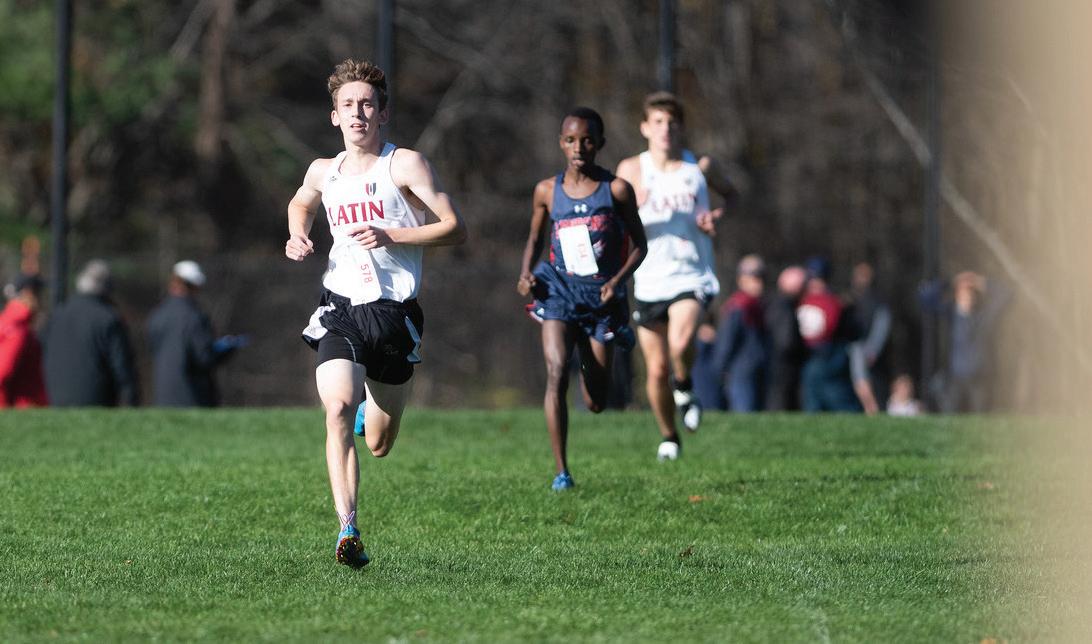
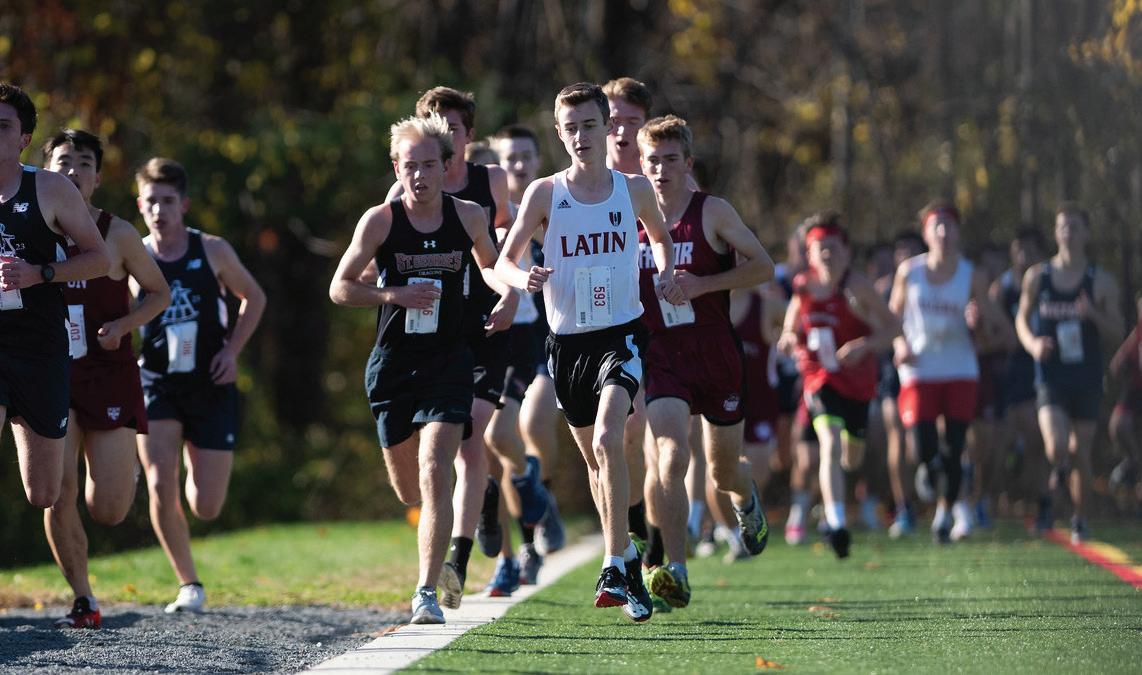
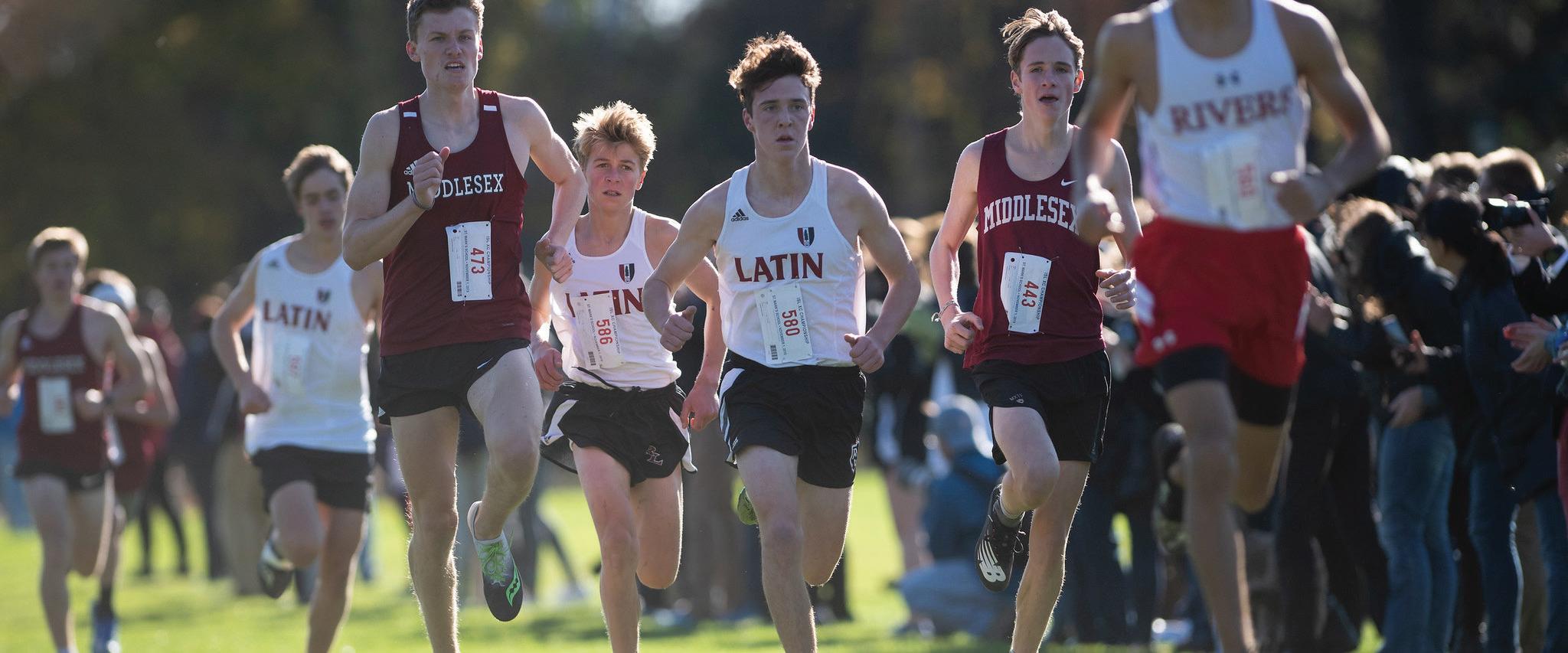
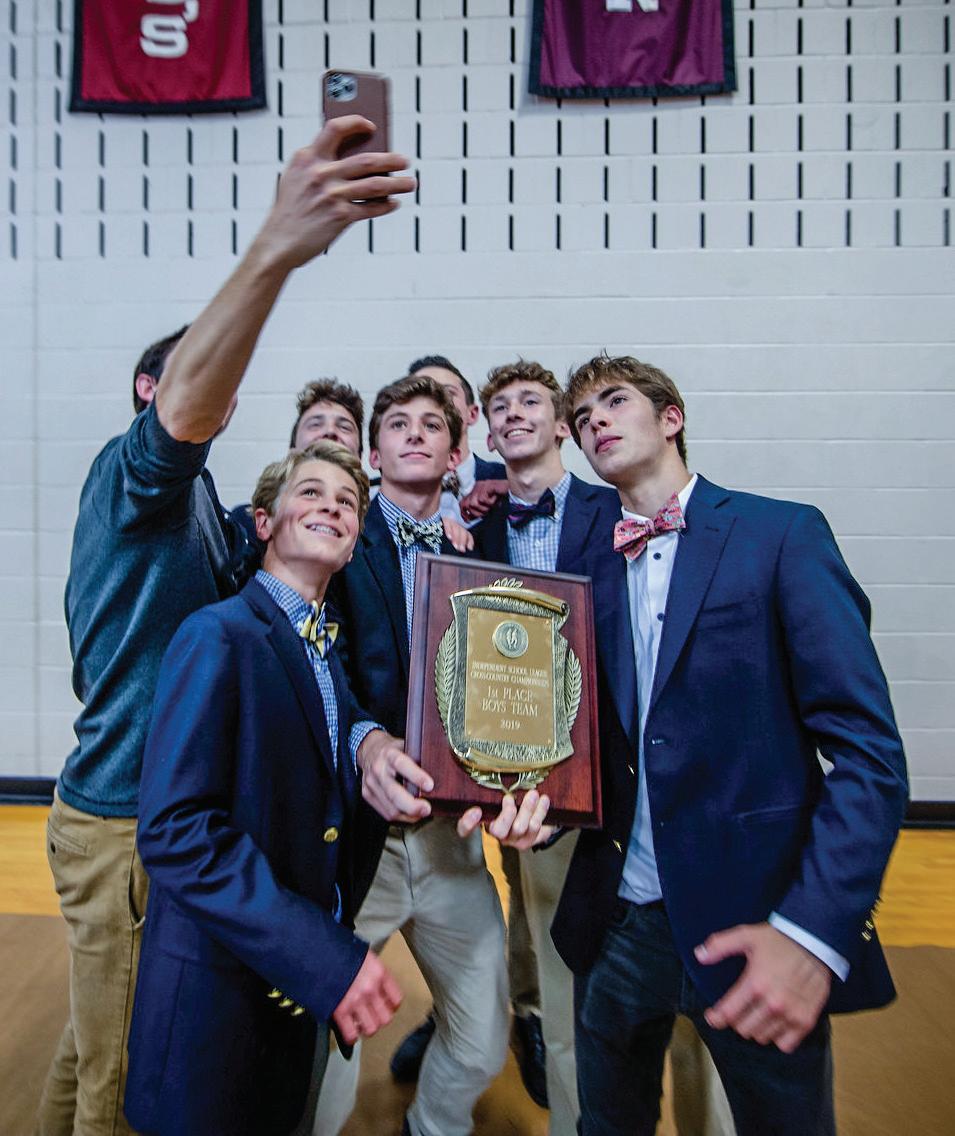
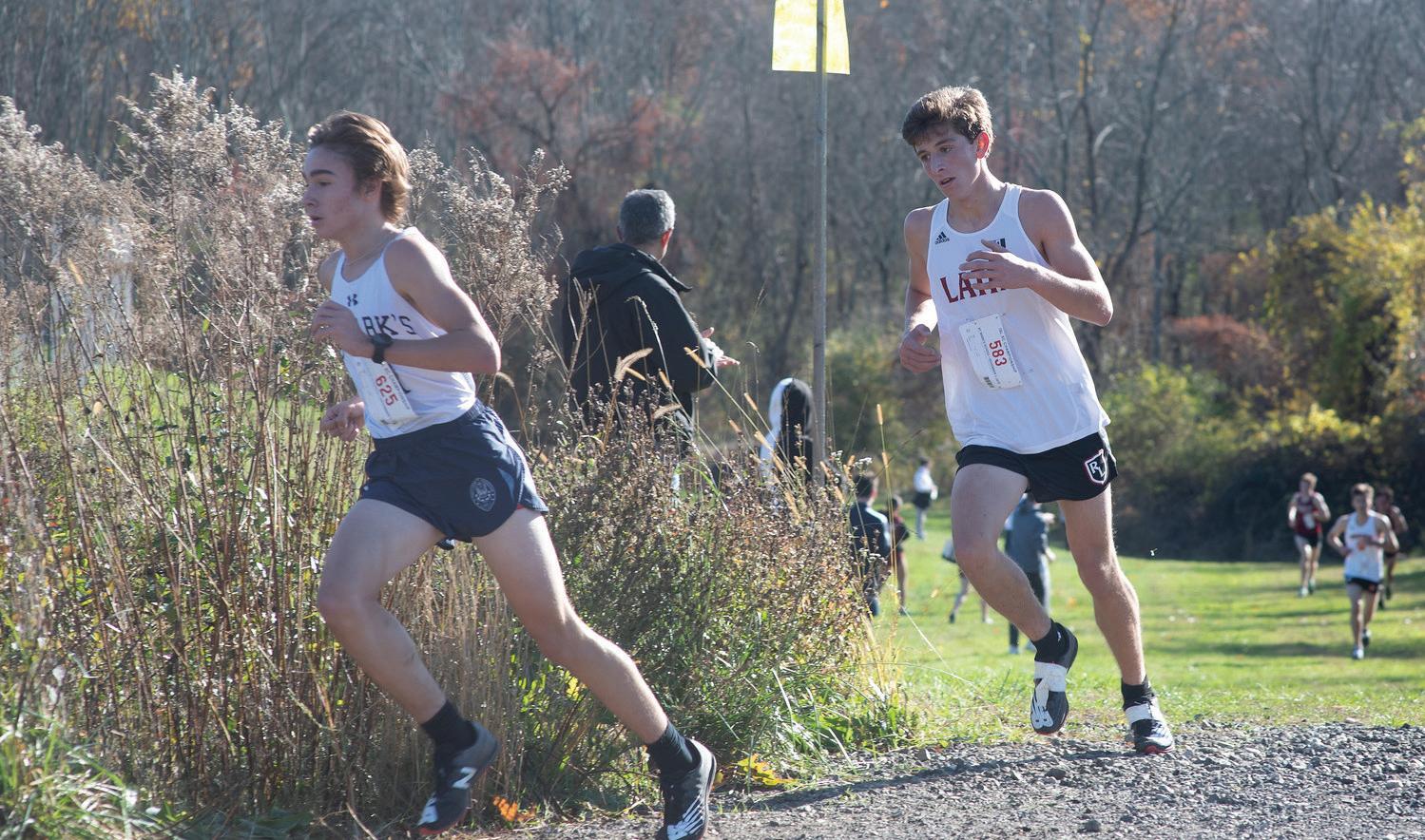
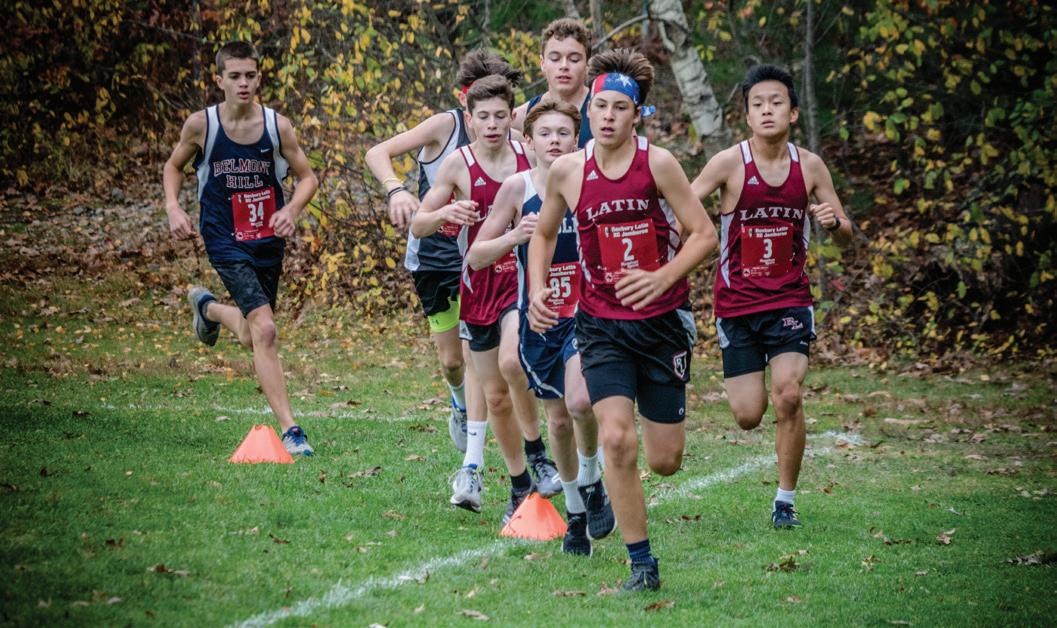
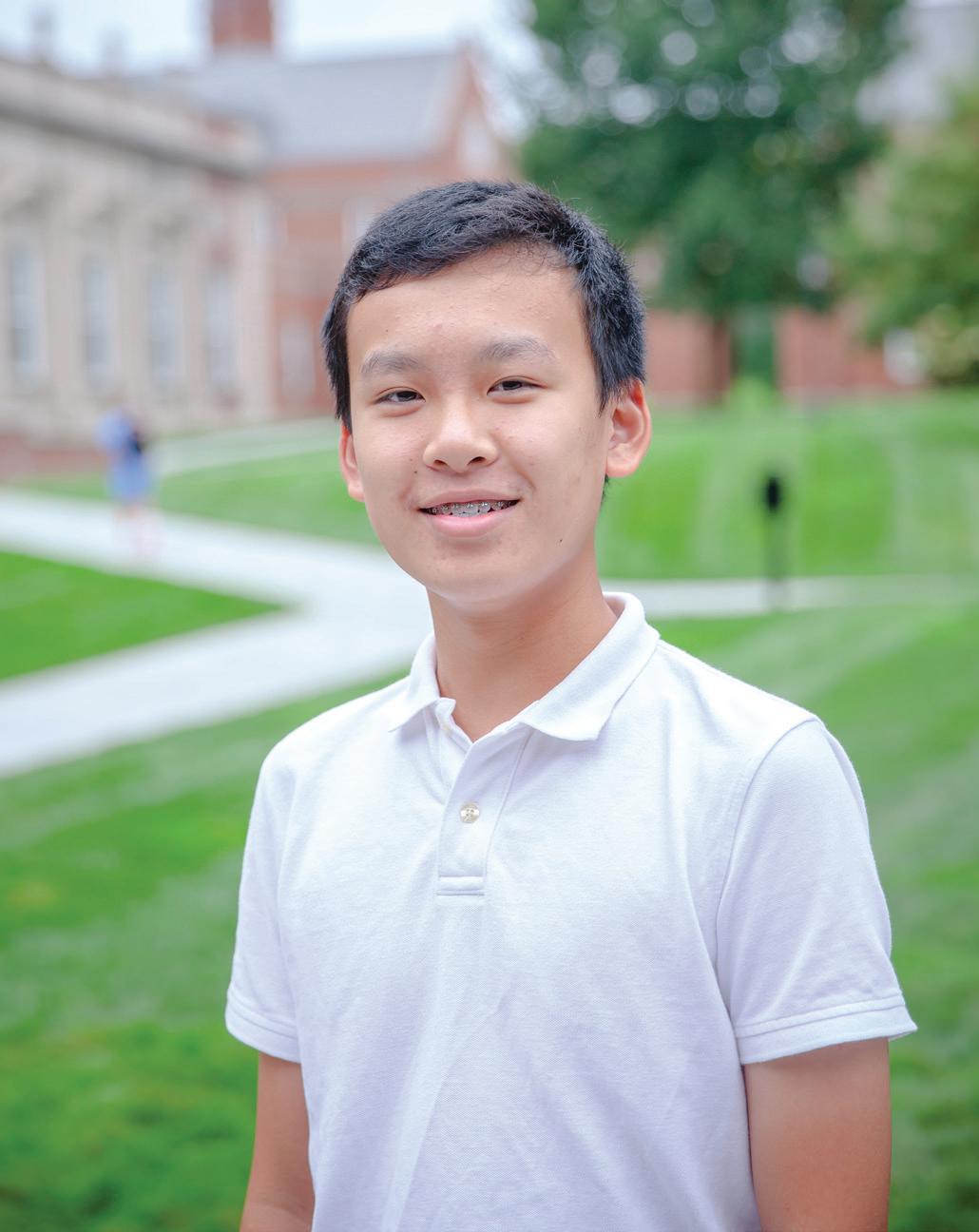
Chris Zhu (I) Named Finalist in Yau High School Science Award
On November 3, senior Chris Zhu was named a finalist in the USA Region of the 2019 Global S.-T. Yau High School Science Award (YHSA) for his mathematical research in Enumerative Combinatorics. As one of three finalists in the mathematics division, Chris is invited to compete in the YHSA Global Final, to be held at Tsinghua University in China.
Selected as a semifinalist based on his research paper, Chris advanced to the USA Regional Competition at Harvard Science Center on November 2 to present his work, titled Enumerating Permutations and Rim Hooks Characterized by Double Descent Sets. In front of six influential mathematics professors from Harvard and Brandeis, Chris introduced his research effort: “In 1915, the British mathematician MacMahon published his ground-breaking work about descent polynomials. For the next century, little work was done on the topic until five researchers from American universities published a joint paper in 2017 to present recursions and algebraic properties of descent polynomials. Inspired by this 2017 paper, I extended their research to a new pattern of descents and proposed a recursion, as well as several new theorems for this new pattern by classifying number sequences as geometric diagrams.”
Mesmerized by the connections between numbers and shapes from a young age, Chris started his exploration in higher math three years ago at Boston University’s Program in Mathematics for Young Scientists (PROMYS) summer program. Last summer, Chris continued his immersion in this program with an awarded PROMYS Scholarship and the support of Roxbury Latin’s O’Connell Fellowship. This year Chris was invited back as a Junior Counselor to mentor new members and teach mini-courses in elliptic curves, an advanced topic in algebraic geometry. Over the past two years, Chris has furthered his excursion into group theory, commutative algebra, complex analysis, analytic number theory, and enumerative combinatorics at MIT PRIMES, a year-long research-oriented math and science program for high school students. In October, Chris published his PRIMES research work on arXiv. org, which will be in a publication by The International Press of Boston.
The S.-T. Yau High School Science Award was founded in 2008 by the Fields Medal Laureate Shing-Tung Yau, director of the Center for Mathematical Sciences and Applications and the William Caspar Graustein Professor of Mathematics at Harvard University. For the past eleven years, the S.-T. Yau High School Science Award has been inspiring thousands of high school students across the globe to take on the challenge of conducting independent mathematics and science research. It provides a platform for international high school math and science enthusiasts to compete and communicate. Being selected as one of the U.S. finalists, Chris will have the opportunity to broaden his connections with the participants from China, Europe, Singapore, and other countries in the Global Final competition. //
Journalist Nikita Stewart on the “1619 Project” and Teaching About Slavery in America
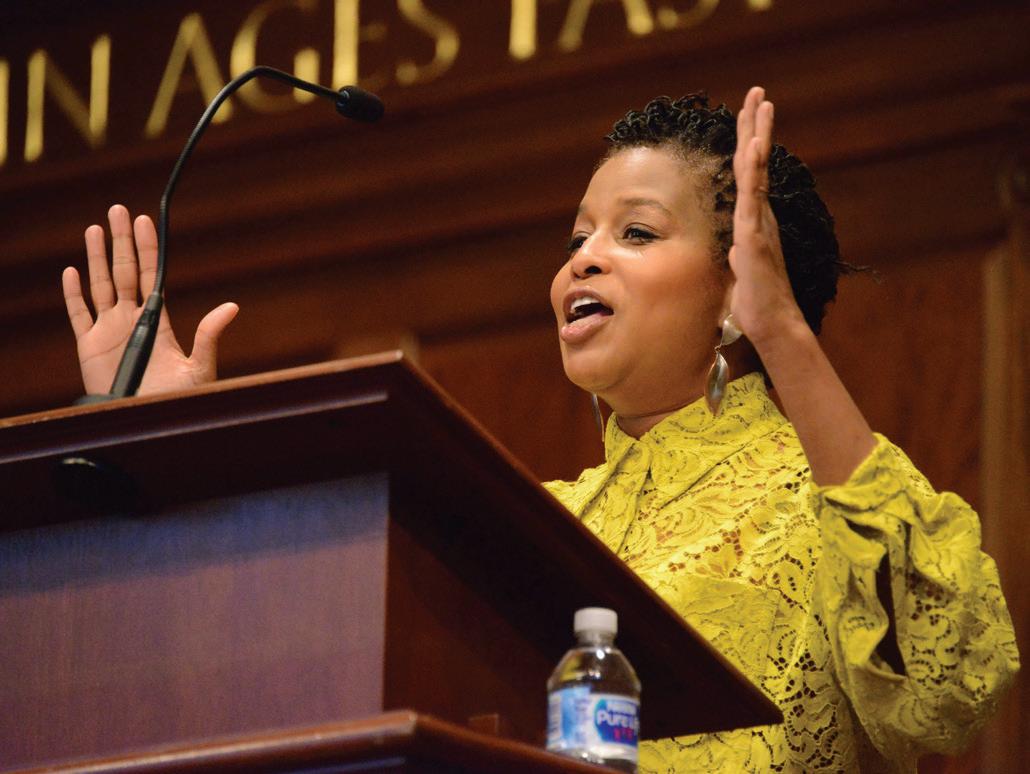
On November 12, New York Times journalist Nikita Stewart addressed students and faculty in Hall, to speak about an important, sobering anniversary. Exactly 400 years ago this fall, the first enslaved people from Africa arrived in Virginia by boat. This past August, The New York Times launched its 1619 Project with the goal of re-examining the legacy of slavery in the United States. Nikita Stewart, a native Texan who studied journalism at Western Kentucky University, wrote one of the project’s lead essays, titled “Why Can’t We Teach This?” Ms. Stewart has been a finalist for the Livingston Award and the Investigative Reporters and Editors Award. This spring she will publish her first book titled Troop 6000; it chronicles the extraordinary story of the first Girl Scout troop designated for homeless girls, and the remarkable countrywide responses it sparked.
Her essay in the 1619 Project addressed specifically the way in which our country’s schools teach—or avoid teaching—the topic of slavery to young people. During Hall, Ms. Stewart shared examples of the ways in which schools in our country misinform or gloss over this enormous, formative part of our nation’s history. The examples were troubling and shocking, particularly because many of them occurred so recently. For example, this year a teacher in Bronxville, New York, held a mock slave auction with the Black students in her fifth-grade classroom. In 2015, a high school social studies textbook in Texas read: “The Atlantic slave trade… brought millions of workers from Africa to the southern United States to work on agricultural plantations.” Ms. Stewart spoke of the way Thomas Jefferson’s relationship with fourteen-year-old slave Sally Hemings is often described euphamistically as an “affair,” and she discussed the many monuments erected celebrating individuals who played prominent roles in perpetuating slavery. “The remnants of slavery are all around us in 2019,” Ms. Stewart explained. “So why can’t we talk about that in our schools?”
With holes and misrepresentations in so many American history textbooks and classrooms, Ms. Stewart encouraged students to look to primary sources in order to get the full picture of our country’s history. Reading primary sources critically and with the source, audience, and historical context in mind, she said, is the best way for students to arm themselves with the most accurate information possible.
After Hall, Ms. Stewart visited two U.S. History classes, to continue the conversation with students and faculty. //
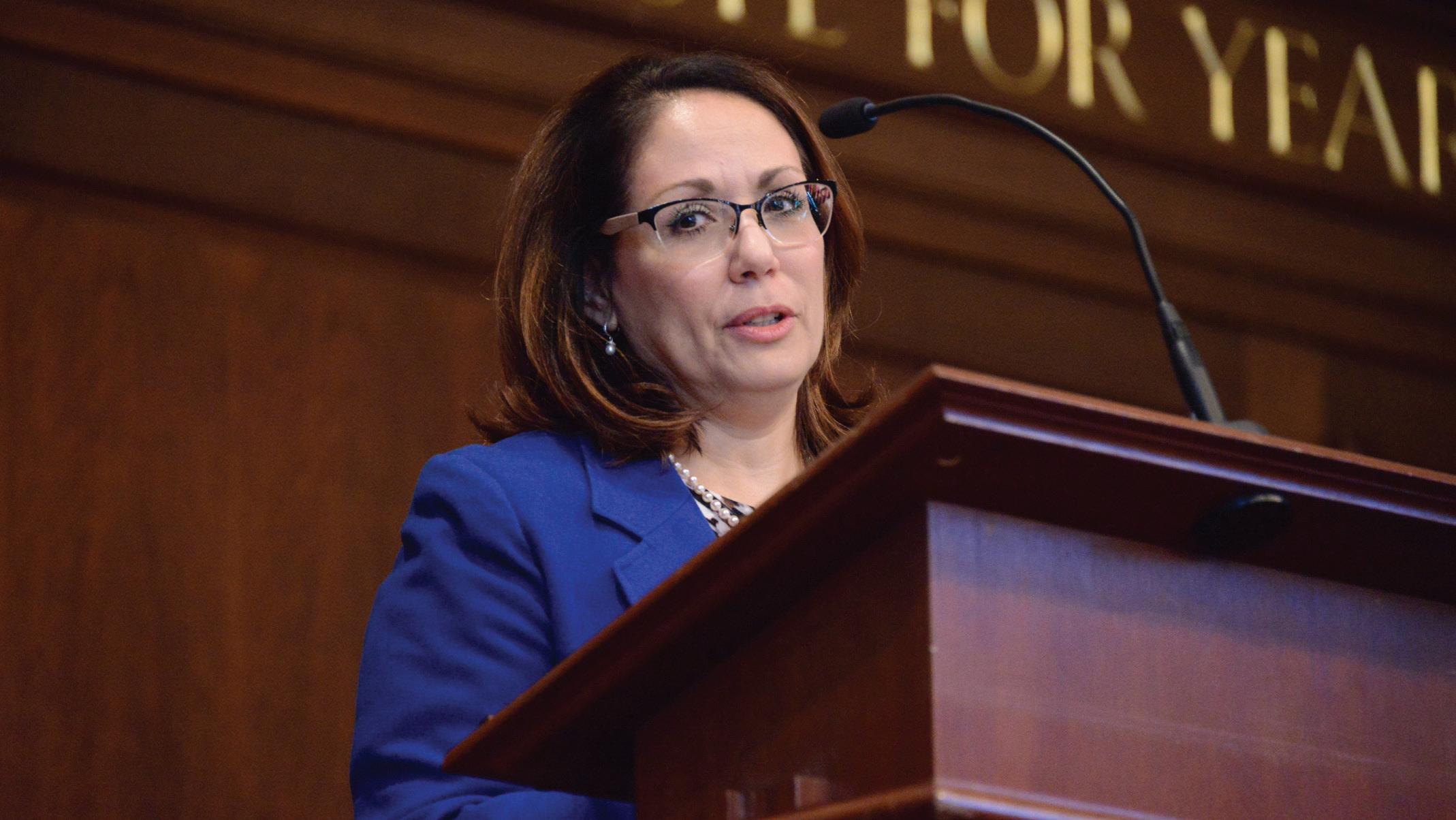
Dr. Vanessa Calderón-Rosado on the Benefits of Gratitude
For fifteen years, Roxbury Latin has begun the last school day before the Thanksgiving break with a tradition that is distinctly RL. Thanksgiving Exercises are an opportunity to, as Headmaster Brennan said, “turn our heads and hearts to the proposition of gratitude—for the country in which we live, for the freedoms and opportunities that are guaranteed by our being Americans, for our families and friends, for this community and others, for intelligence and discernment and deep feeling. For our gifts and aspirations, for good sense and hoped-for-dreams. Indeed we should live with an attitude of gratitude.”
During Hall students, faculty, and guests sang with gusto— We Gather Together, For the Splendor of Creation, America the Beautiful. Mr. Myron McLaren read Psalm 100, and senior Ian Balaguera read “Harvest Hymn” by John Critchley Prince. The Hall featured the resonant Litany of Thanksgiving—which includes a boy from each of the six classes—reminding us all of our “blessings manifold.” “The only thing wrong with Thanksgiving as a holiday,” Mr. Brennan asserted, “is that it may suggest that this is the only time to give thanks, or at least the most important. Each day, virtually each hour, offers an occasion for gratitude.” Delivering the morning’s Hall address was Dr. Vanessa Calderón-Rosado, CEO of Inquilinos Boricuas en Acción (IBA)—a community development corporation that helps individuals and families improve their lives through highquality affordable housing, education, and arts programs. Under Dr. Calderón-Rosado’s leadership since 2003, IBA has become the largest Latino-led nonprofit organization in Greater Boston.
“According to Cicero, gratitude is more than the greatest virtue—it is the mother of all other remaining virtues,” said Dr. Calderón-Rosado. “Studies have shown that gratitude may be associated with many benefits, including better physical health, better mental health, increased happiness, increased life satisfaction, and decreased materialism. Other studies seem to validate Cicero’s observations. They suggest that gratitude as a virtue encourages the development of other virtues, such as patience, humility, and wisdom… Being grateful requires a conscious and deliberate effort to pause and recognize the goodness inside us and around us. It takes developing an understanding of our human and social condition.”
Dr. Calderón-Rosado described her experience growing up in a loving home in San Juan, Puerto Rico, with her mother, father, and brother. She recalled the nightly prayers she and her mother would say together. “It was mostly led by her and repeated by me, but those prayers, I realized, were our act of thanksgiving. We gave thanks for the sun, for nature, for being alive, for breathing, for our ability to see the colors of the flowers, for our ability to hear the birds singing. We gave thanks for our ability to walk, run, play, eat, sleep. For the roof above our heads, for the cars that took us to and from school and work every day. We gave thanks for my teachers, for the food on our table. My mom and I gave thanks for our family, for their health, and for ours, and for our beating hearts. It was a long list, but at the end of our prayers each night, she and I felt happy. We looked at each other with love, with a smile, and she kissed me. And before she left my room, she said Dios te bendiga, mi hija. God bless you, my daughter. I remember the feeling of joy that being thankful produced in me before closing my eyes to sleep.”
During Hall, Dr. Calderón-Rosado lightheartedly called upon a boy from each class to share aloud something he was thankful for—something that started with the same letter as his first name: Mark (VI) was grateful for his mom; Vishnu (III) for vegetables; Daniel (II) for dance; and Evan (I) for “everyone here!”
Dr. Calderón-Rosado was selected as a Barr Fellow in 2009, and in 2010 she became the first Latina ever to be appointed to the Massachusetts Board of Elementary and Secondary Education. In 2014, she was appointed to the City of Boston’s Housing Task Force and Women’s Commission. She has served as advisor to numerous other task forces, commissions, and highprofile executive searches, including those for Boston’s Police Department and Public Health Commission. Born and raised in Puerto Rico, Dr. Calderón-Rosado earned her bachelor’s degree from the University of Puerto Rico and her doctorate in public policy from UMass Boston. She is the mother of Carlos ’16, and Antonio, Class I. //
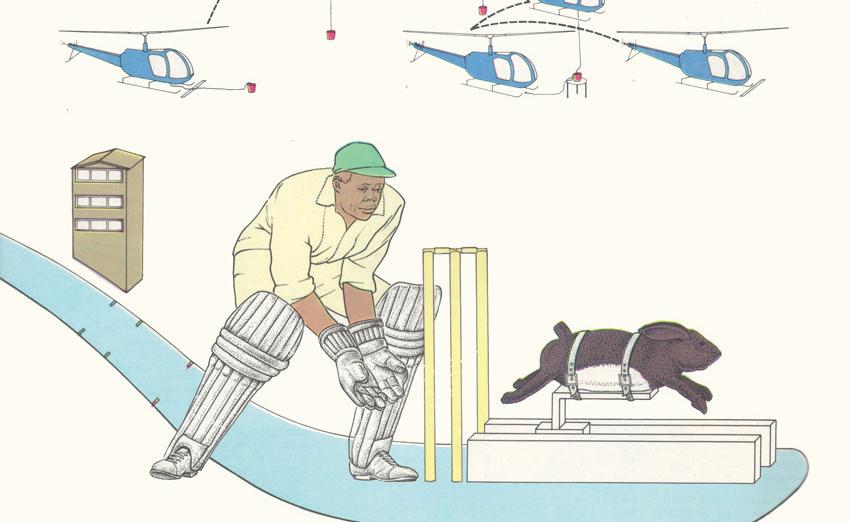
Digital Artist Neil Horsky on the Possibilities in Art
On December 5, students in Sonja Holmberg’s Grade 7 Digital Design course were treated to a visit by professional artist Neil Horsky, who spoke with the boys about his work and about his new book, The Rules of the Game. Mr. Horsky is a community artist based in Roxbury, whose work is done in Photoshop and other digital media. His book features 12 digital design collages that re-interpret vintage instructional illustrations and diagrams, all demonstrating how to play various sports. Mr. Horsky explained how he recontextualizes these sports, using them as metaphors for “the game of life,” the social contracts that we all sign, and the rules by which we abide, whether implicitly or explicitly. Mr. Horsky’s digital collages merge the mundane with the fantastical, becoming increasingly surreal throughout the course of the book. During his lecture, Mr. Horsky discussed various compositional elements, Photoshop techniques, strategies for conceptual development, and the incorporation of text into imagery, among other things.
Mr. Horsky’s art, music, video, and writings have been part of dozens of exhibitions in and around Boston. He has led workshops and delivered presentations in various parts of the country; has collaborated with numerous artists and institutions on community art and performing arts projects; and has taught arts-integrated humanities courses at several educational institutions throughout Boston. Mr. Horsky employs the arts to encourage self expression, connect people, and build solidarity. He aims to help individuals and communities thrive by cultivating creativity, imagination, and critical thinking, and by inspiring the personal and collective will to enact change. //










